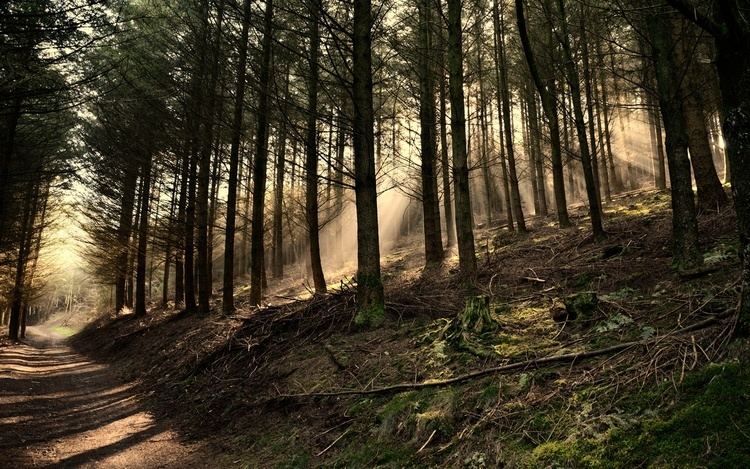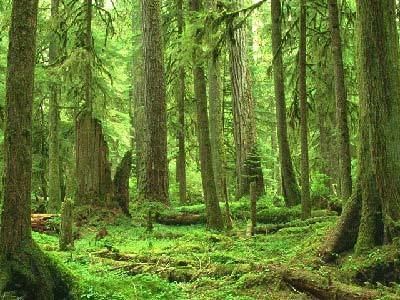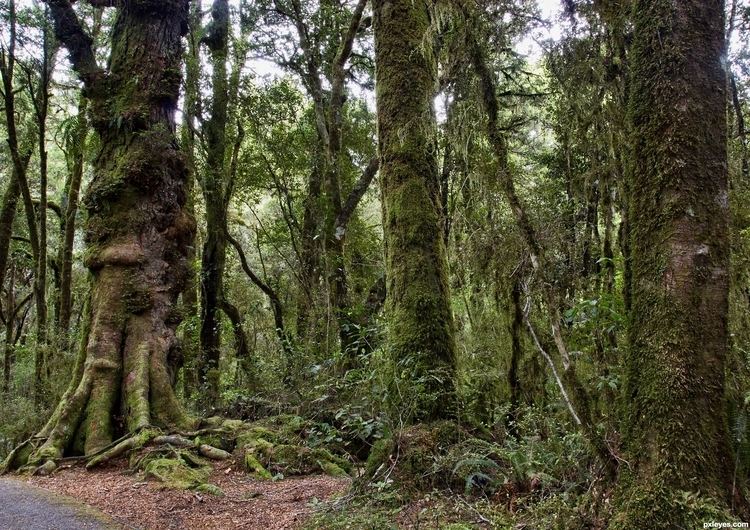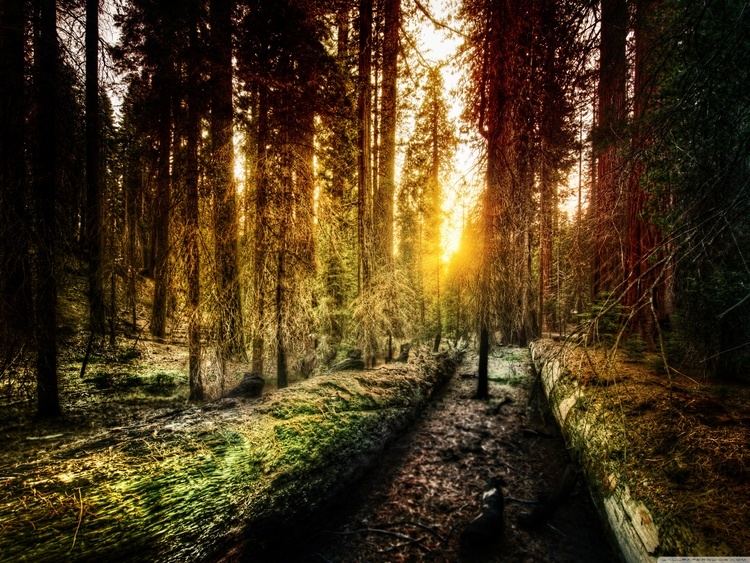Location East of the Shire | ||
 | ||
Type A remnant of the primordial forests of Eriador Notable locations the Dingle, the Withywindle; the Bonfire Glade | ||
In J. R. R. Tolkien’s fictional universe of Middle-earth, the Old Forest was a daunting and ancient woodland just beyond the eastern borders of the Shire. Its first and main appearance in print was in The Fellowship of the Ring, especially in chapter VI, which is itself titled "The Old Forest".
Contents
- Old forest tales of the sussex weald full album
- Overview
- Geography Flora and Fauna
- Timeline
- Hobbits vs the Old Forest
- Reception
- Adaptations
- References

Forests play an enormous role throughout the invented history of Tolkien's Middle-earth and are inevitably an important episode on the heroic quests of his characters. The forest device is used as a mysterious transition from one part of the story to another.

Old forest tales of the sussex weald full album
Overview

The Old Forest lay near the centre of Eriador, a large region of north-west Middle-earth. It was one of the few survivors of the primordial forests which had covered much of Eriador before the Second Age. Indeed, it had once been but the northern edge of one immense forest which reached all the way to Fangorn forest, hundreds of miles to the south-east.

The vicinity of the Old Forest was the domain of three nature-spirits: Tom Bombadil, Old Man Willow and Goldberry. The powers of these beings doubtless contributed to its survival when other forests were destroyed. The house of Tom Bombadil was located beside the eastern eaves of the forest, near where the Withywindle stream flowed over a waterfall into the woods. Old Man Willow stood in the centre of the forest, on the Withywindle's meandering banks.
Geography, Flora and Fauna
The Old Forest was about 1,000 square miles in area (≈ 2,600 km²). It was bordered on the east by the Barrow-downs, in the north it reached towards the Great East Road, and in the west and south it approached the Brandywine river. The Withywindle, a tributary of the Brandywine, ran through the heart of the forest, which covered most of the Withywindle's drainage basin.
This was also a 'catchment area' in another sense. The landscape, trees and bushes were aligned so that if any strangers attempted to traverse the forest, then they were funnelled towards the Withywindle, and into the clutches of Old Man Willow in particular. The valley of the Withywindle within the Old Forest was known as the Dingle.
The Old Forest was a type of woodland nowadays described as temperate broadleaf and mixed forest. The west and south of the forest was dominated by "oaks and ashes and other strange trees", which were generally replaced by pines and firs in the north. Beeches and alders were found here and there in the forest, and willows were dominant along the Withywindle.
Many of the trees were covered "with moss and slimy, shaggy growths." The understorey was generally congested with bushes and other undergrowth, including brambles. A variety of plants grew in the forest's occasional glades: grass, hemlocks, wood-parsley, fire-weed, nettles (Urtica dioica etc.) and thistles.
A variety of birds, mammals and insects were recorded in the vicinity of the Withywindle, but not elsewhere in the forest. Bombadil told tales of the "strange creatures of the Forest", but we are not provided with any elaboration.
Timeline
The Old Forest was little concerned with the history of Middle-earth, but sometimes that history approached close to the forest, and occasionally it entered in.
Hobbits vs the Old Forest
In one of his letters, Tolkien explained that "the Old Forest was hostile to two-legged creatures because of the memory of many injuries." Among these two-legged creatures were Hobbits.
When Gorhendad Oldbuck and his clan of Hobbits settled Buckland, they began to encroach upon the Old Forest, thus re-awakening its hostility to two-legged creatures that had first been aroused back in the Second Age. The settlers soon found themselves under threat from the forest. They felt that the trees of the Old Forest were in some manner 'awake', and were hostile. The trees swayed when there was no wind and whispered at night, and they daunted intruding hobbits by tripping them, dropping branches, and driving them deeper into the forest. Deep within the Old Forest was the Withywindle Valley, which was the root of all the terrors of the forest; it could be a dark, evil and malevolent place.
The Bucklanders therefore planted and maintained a great Hedge (also known as the High Hay) all the way along Buckland's eastern border, which ran right along the edge of the forest. This had occurred "many generations" before the War of the Ring.
However at length (but still "long ago" before the War of the Ring), the Bucklanders found that the Hedge was under "attack" by the forest. Trees began to plant themselves against the Hedge and lean over it. To counter this attack, the hobbits cleared a narrow strip of land on the outside of the Hedge, felling and burning many trees. They also cleared a space some way inside the forest; this later became known as the Bonfire Glade.
The ruling family of Buckland, the rather numerous Brandybucks (heirs of Gorhendad Oldbuck), owned a private gate in the Hedge, through which they occasionally dared the threshold of the Old Forest. Some of these visits seem to have been casual jaunts ("when the fit takes them"), to satisfy the Brandybucks' inclinations as Fallohides, who were "lovers of trees and of woodlands." But other Brandybuck expeditions must have been more practical, just plain hobbit-sense, to maintain the cleared strip. It was still in existence during the War of the Ring. At least one non-Brandybuck hobbit was reputed to visit the Old Forest: namely Farmer Maggot.
The heir of the Brandybucks during the War of the Ring was Meriadoc Brandybuck: Merry of the famous Fellowship of the Ring. He had been into the Old Forest "several times", and he had a key to the gate. On Merry's advice, Frodo Baggins (the bearer of the One Ring) decided to attempt a traversal of the dreadful forest in order to evade the pursuit of Black Riders: the forest was considered the lesser of two evils.
The Old Forest experiences of Frodo, Merry and their companions Samwise Gamgee and Peregrin Took (and their ponies) are detailed in the The Fellowship of the Ring. In brief, the four hobbits were eventually lured into the clutches of Old Man Willow. Pippin and Merry were trapped inside but were rescued in time by Tom Bombadil.
Reception
Verlyn Flieger has observed that the Old Forest contradicts Tolkien's protective stance for wild nature and his positive views of trees in particular. Indeed, although the Hobbits in The Lord of the Rings had close shaves with the Black Riders, the first real antagonist which they encountered directly is Old Man Willow. She writes also that the Bucklanders cutting and burning of hundreds of trees along the Hedge is not different from the destruction caused by Saruman's orcs in the woods around Orthanc. To be fair however, the Bucklanders cleared a margin of the forest for self-defence, whereas the orcs wreaked wanton and wholesale deforestation.
The description of "Old England" in John Buchan's The Blanket of the Dark (1931) has been compared to Tolkien's Old Forest. Buchan's protagonist Peter Bohun disappears in a part of England that has been allocated to the real-world English Midlands around Evesham. The West Midlands were beloved by Tolkien because the maternal part of his family, the Suffields, were from this area.
Tom Shippey has proposed that the Old Forest contains a more fundamental symbolism. Frodo, the central protagonist of The Lord of the Rings, describes the forest as "the shadowed land"; Shippey draws on the context to suggest the forest could be an allusion to Death.
Adaptations
The Old Forest does not appear in the film adaptations of The Lord of the Rings, neither the animated nor the live action version, but it is mentioned by Merry in a conversation with Pippin while they were held hostage by the Uruk-hai in The Lord of the Rings: The Two Towers. In the BBC's 1981 radio series The Lord of the Rings, when the hobbits are leaving Crickhollow, Merry announces, "we must go through the Old Forest" to evade the Black Riders, but there is no portrayal of their experiences in the forest, and there is no further reference to the Old Forest.
It appears in the video game The Lord of the Rings: The Fellowship of the Ring, but the game is rather reminiscent of Mirkwood by adding on large spiders that lurk in the labyrinth and on the banks of the Withywindle. Nowhere in The Lord of the Rings did Tolkien describe spiders in the Old Forest. Morgoth's creatures did not really enter and darken the Old Forest, but they did so in Mirkwood.
The Old Forest also appears in Turbine Inc's The Lord of the Rings Online: Shadows of Angmar MMORPG. In this game, there was originally no map in the Old Forest, and it was like a hedge maze. A map was added later on, though it is still a very dark and mysterious place to visit.
